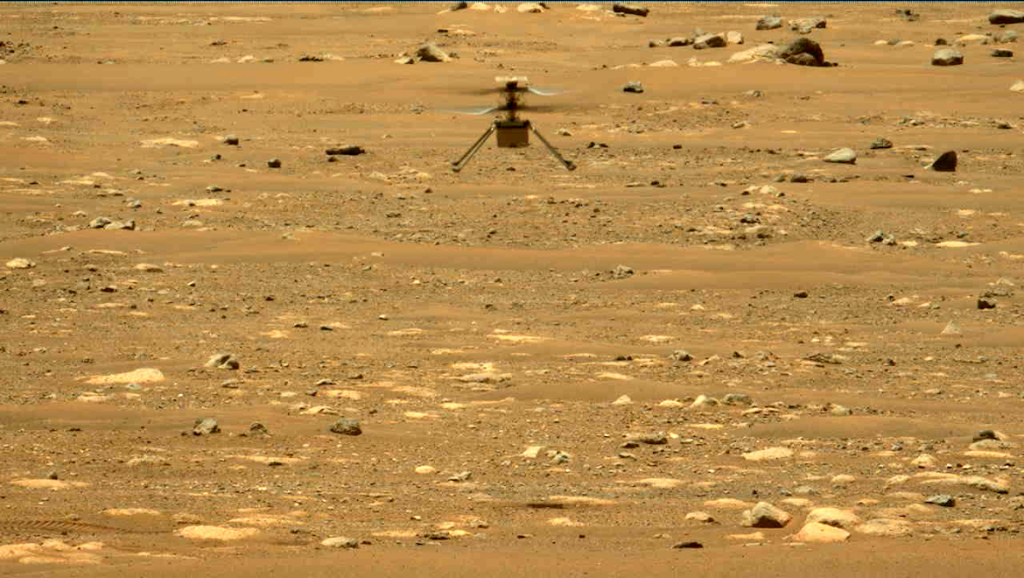
NASA’s Ingenuity Mars helicopter has officially flown further and faster than ever before, with its third successful flight test on Sunday exceeding parameters of the flight tests on Earth.
Ingenuity’s third flight test saw it soar five metres high, the same height as its second test, before flying a total of 50 metres downrange, just over half the length of a football field, reaching a top speed of two metres per second – its highest ever speed.
The test took a total of 80 seconds, exceeding the length of its first and second tests of 39 seconds and 51 seconds, respectively.
As always, NASA’s Ingenuity team at its Jet Propulsion Laboratory (JPL) in southern California were thrilled with the results of the test, with Ingenuity performing exactly as planned.
According to NASA, its JPL team is already compiling the information gathered from all three of Ingenuity’s tests to date to not only inform its future flight tests, but possible future Mars-based rotorcraft.
“Today’s flight was what we planned for, and yet it was nothing short of amazing,” said Dave Lavery, the project’s program executive for Ingenuity Mars Helicopter at NASA Headquarters in Washington.
“With this flight, we are demonstrating critical capabilities that will enable the addition of an aerial dimension to future Mars missions.”
NASA expects to see video imagery of the third flight as recorded by its Perseverance rover within the coming days.
The national space agency has also attempted to further push the capabilities of Ingenuity by adding instructions for it to capture more photos of its own, utilising its in-built colour camera.
The rotorcraft also has an in-build black-and-white navigation camera, which provided the very first images of Ingenuity’s first successful flight.
“This is the first time we’ve seen the algorithm for the camera running over a long distance,” said MiMi Aung, the helicopter’s project manager at JPL. “You can’t do this inside a test chamber.”
According to NASA, its JPL-based Vacuum chambers, which simulate the atmospheric conditions of Mars, are limited – only providing the helicopter to move no more than around half a metre in any direction.
Ingenuity’s fourth flight test is already being planned for a few days time.
Ingenuity is a solar-powered rotorcraft vehicle that boasts twin propellers, a metallic body, four legs, and weighs just under two kilograms (on Earth).
It was sent aboard NASA’s Perseverance Mars rover in February to complete one mission: prove that it could fly in Mars’ atmosphere, which varies significantly from that of Earth.
While Mars has much less gravitational pull than Earth, its atmosphere is just 1 per cent as dense, making it difficult to generate lift.
As such, the engineers of Ingenuity gave the aircraft four-foot long rotor blades that spin at higher speeds than would be required on Earth.
Following three successful test flights, NASA’s Ingenuity team stated that future flight tests will continue to test the limits of the aircraft, with each test pushing the device to go higher and further for longer.
Despite again performing and landing in great shape, Ingenuity’s career may be short-lived, according Aung.
NASA has confirmed that it intends to push the rotorcraft to its upper physical limits, testing the extent of its speed, height and range limits.
“We will be pushing the envelope,” Aung said. “And, ultimately, we expect the helicopter will meet its limits.”












